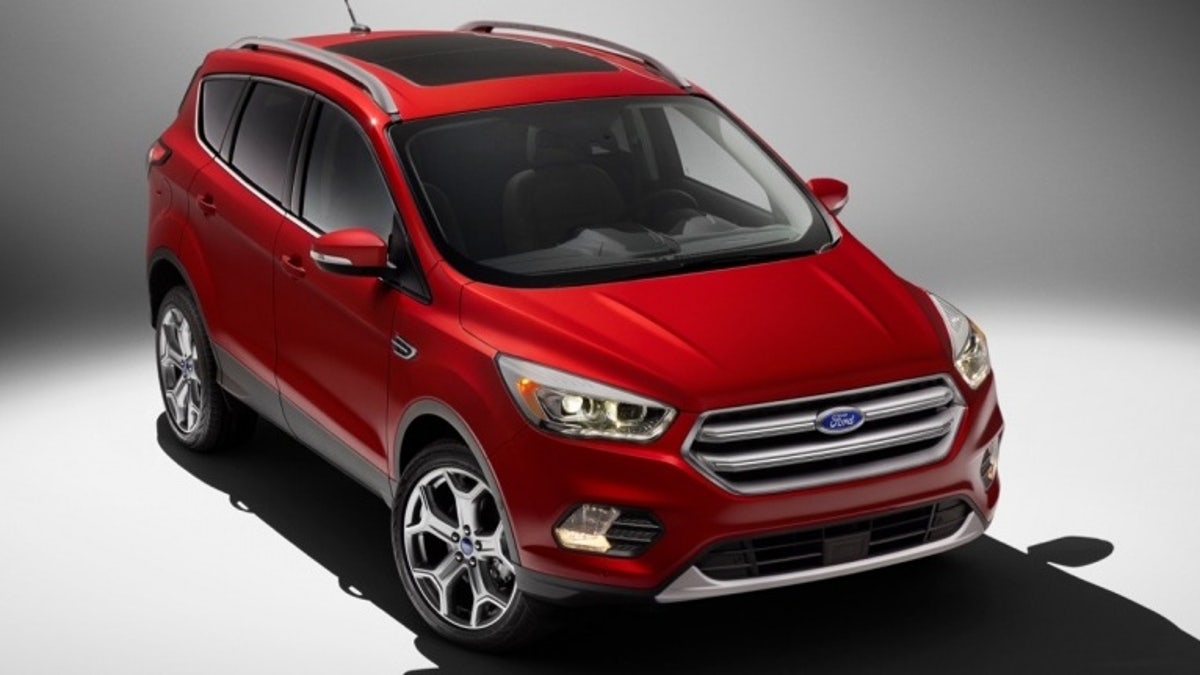
When the current-generation Ford Escape launched back in 2012, Ford made some pretty radical changes by ditching the previous Escape’s boxy styling for a more car-like look, and merging the Escape with the European-market Kuga. But now all of that newness is starting to wear off.
To keep things fresh, the 2017 Ford Escape gets new styling and a host of new technology features. Debuting at the 2015 Los Angeles Auto Show this week, it should help Ford take the fight to fellow segment stalwarts like the Honda CR-V, Toyota RAV4, and Subaru Forester.
The most noticeable exterior change is a new hexagonal grille that gives the Escape more of a familial resemblance to other Ford models. It’s part of a new front fascia that’s a little less cluttered than the previous model’s visage. This relatively small update makes for a big improvement to the Escape’s overall appearance. On the inside, Ford rejiggered things to add more storage space and device charging ports.
Under the hood, two new turbocharged EcoBoost engines take up residence. A 1.5-liter four-cylinder produces 180 horsepower and 185 pound-feet of torque, while a 2.0-liter four with a twin-scroll turbo produces 245 horsepower and 275 lb-ft. Both come standard with an engine stop-start system, which Ford says is worth a 4-6 percent improvement in fuel economy in stop-and-go traffic.
Related: Ford chooses finalists for Smart Mobility Game Challenge
Base models still get by with a naturally aspirated 2.5-liter four-cylinder, rated at 168 horsepower and 170 lb-ft. All models use six-speed automatic transmissions, with paddle shifters available on the SE and Titanium models. Front-wheel drive is standard, with all-wheel drive optional on all but the base Escape S.
The 2017 Escape is also the first Ford vehicle to get the new Sync Connect system. This allows drivers to perform functions like remotely locking or starting a vehicle via an app. It also provides vehicle location and diagnostic information like tire pressures and fuel level. The Sync 3 infotainment system that debuted on the 2016 Escape is also available.
In addition, Ford loaded the 2017 Escape up with driver-assistance features, including adaptive cruise control, a forward-collision warning system with automatic braking, a park assist system that steers the Escape into spaces, lane-keeping alert, and blind-spot monitoring with rear cross-traffic alert. A foot-activated tailgate is still available as well.
While not as significant as a full redesign, these changes should keep the 2017 Ford Escape competitive for the foreseeable future.